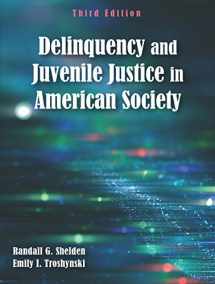
Delinquency and Juvenile Justice in American Society, Third Edition
Book details
Summary
Description
What is delinquency? What are the pathways to offending? What prevention strategies exist? To understand delinquency, we need to overcome stereotypical thinking and implicit biases. This engaging, affordable text explores the impact of gendered, racial, and class attitudes on decisions to arrest, detain, adjudicate, and place youths in the juvenile justice system.
Shelden and Troshynski highlight the social, legal, and political influences on how the public perceives juveniles. They look at the influences of family and schools on delinquency, as well as the impact of gender, trauma, and mental health issues. Discussions of topics such as the school-to-prison pipeline, disproportionate minority contact, and inequality provide a nuanced perspective on delinquency a critical examination of social policies intended to control delinquency and the populations most likely to enter the juvenile justice system.
The authors also examine the dramatically declining juvenile crime rate and advances in neuroscience that have fostered substantive reforms. These alternatives to confinement are replacing the institutions that have repeatedly produced failure with rehabilitative programs that offer hope for a more promising future.
Not-for-sale instructor resource material available to college and university faculty only; contact publisher directly.


We would LOVE it if you could help us and other readers by reviewing the book
Book review



